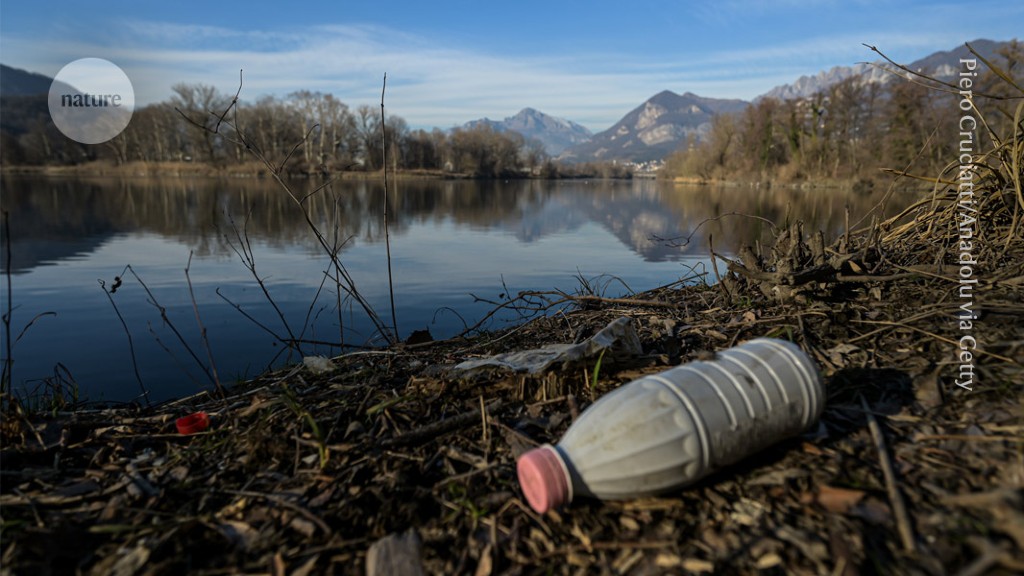Buried microplastics complicate efforts to define the Anthropocene But their ability to migrate to older layers is muddying the waters

Plastic particles in sediments could help to pin down the start of a new geological epoch

Particles from plastic waste find their way into sediments that settle at the bottom of lakes.Credit: Piero Cruciatti/Anadolu via Getty
The presence of microplastics in layers of material that settle at the bottom of lakes might be an unreliable way to determine the onset of the Anthropocene — the geological age marking the consequences of human activity on the environment. That is the conclusion of researchers who have shown that tiny plastic particles can infiltrate deep into old sediments.
The date when the Anthropocene began is still being debated. But the presence of microplastics is one of the measures that geologists look at when analysing material from lakes and seas to see whether human activity has made an impact. And microplastic content has also been suggested as a way to date geological sediments.
In a study published today in Science Advances1, researchers looked for plastics in sediment from three lakes in Latvia: Seksu, Pinku and Usmas.
They found 14 types of plastic in sediment samples. In all three of the lakes, the most recent, uppermost sediment layers contained the most plastic particles. But the team also found that smaller, narrower particles had travelled down into much older sediments that formed long before plastic production began in the 1950s. For example, particles of the biodegradable plastics polylactic acid (PLA) and polyhydroxybutyrate (PHB) were found in sediment that is more than 200 years old. The researchers used established techniques to date sediment samples, measuring the amounts of lead isotopes and spheroidal carbon-containing particles that the samples contained.
“It is clear geologists cannot use microplastics as precise markers,” says co-author Inta Dimante-Deimantovica, an ecologist at the Latvian Institute of Aquatic Ecology in Riga. “The beginning of the Anthropocene cannot be defined at 1950 based on microplastic remains in lake sediments.”
Other lakes show different trends, says Felipe García-Rodríguez, a geoscientist at the University of the Republic of Uruguay in Montevideo who has previously studied the Patos-Mirim lagoon system in South America and concluded that microplastics can be used as accurate markers for the onset of the Anthropocene. He agrees that these plastics can migrate downwards in sediment, but says that the extent to which this happens depends on the sedimentary system being studied.
Dimante-Deimantovica says that her team’s findings indicate that caution is needed if microplastics are going to be used to work out when the Anthropocene began. “There are great number of aspects in determining the onset of Anthropocene,” she says. “Microplastics won’t provide a clear solution.”
doi: https://doi.org/10.1038/d41586-024-00535-5
This story originally appeared on: Nature - Author:Katharine Sanderson


















